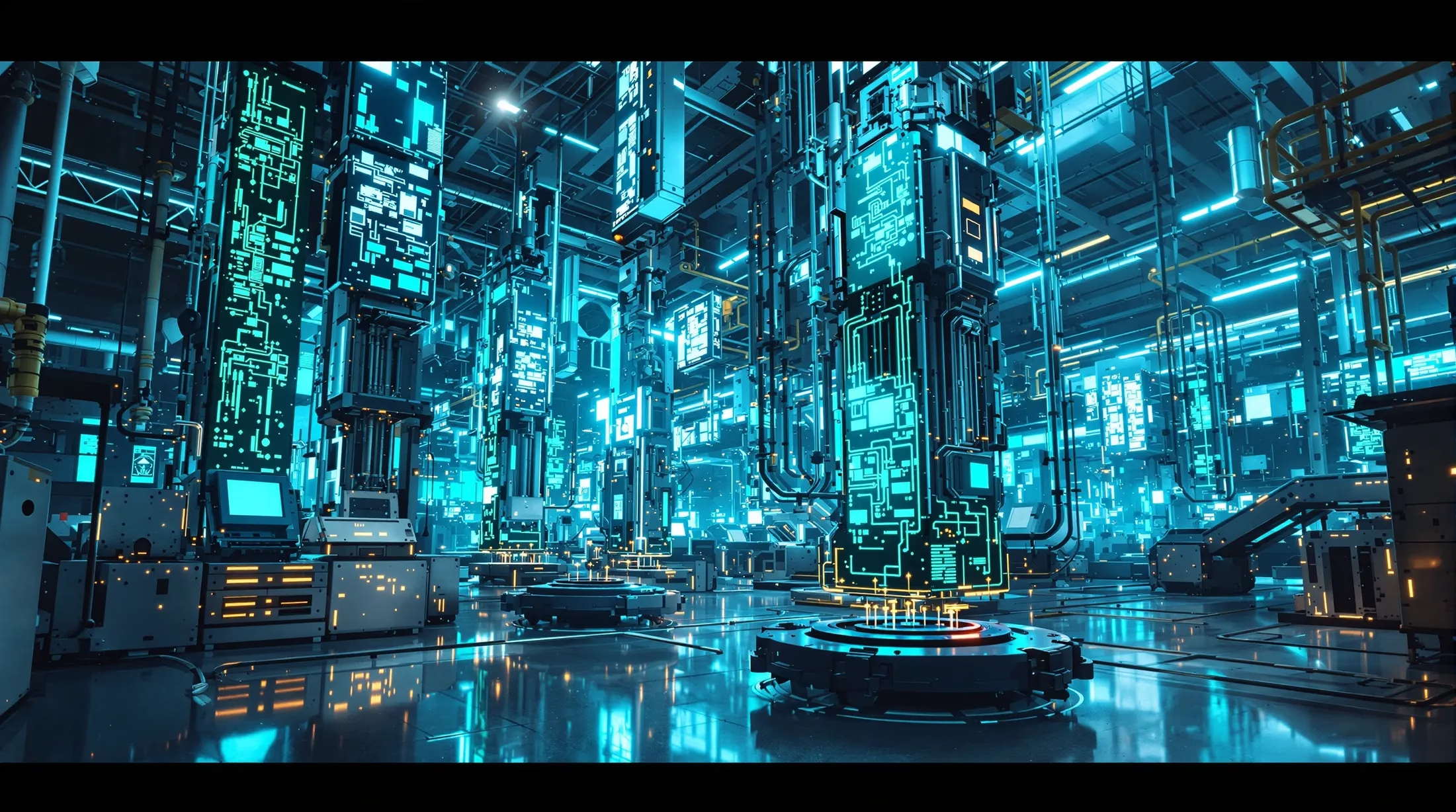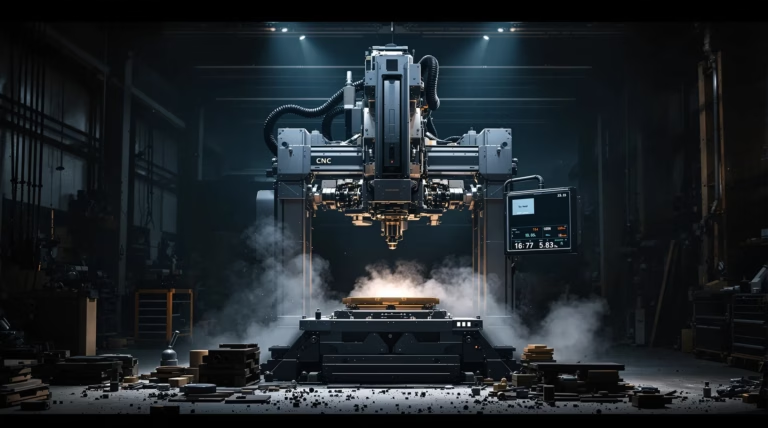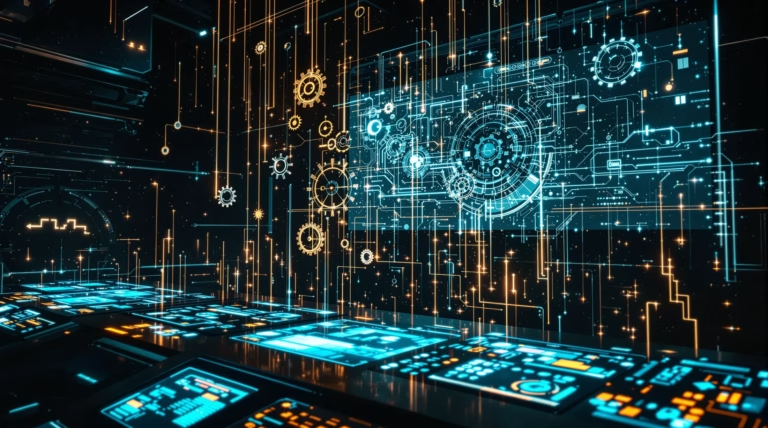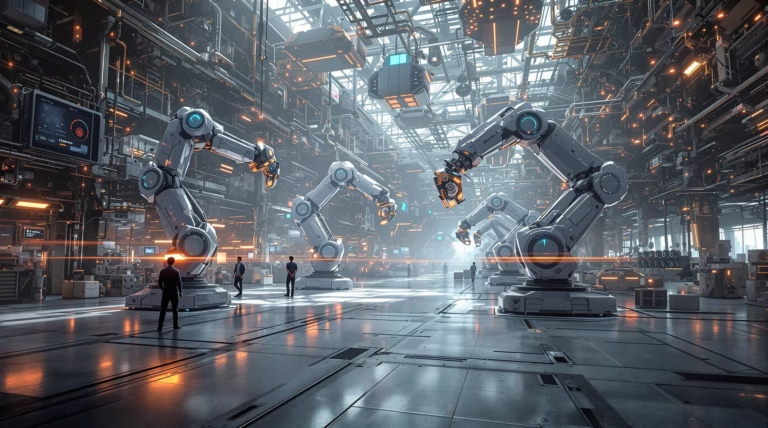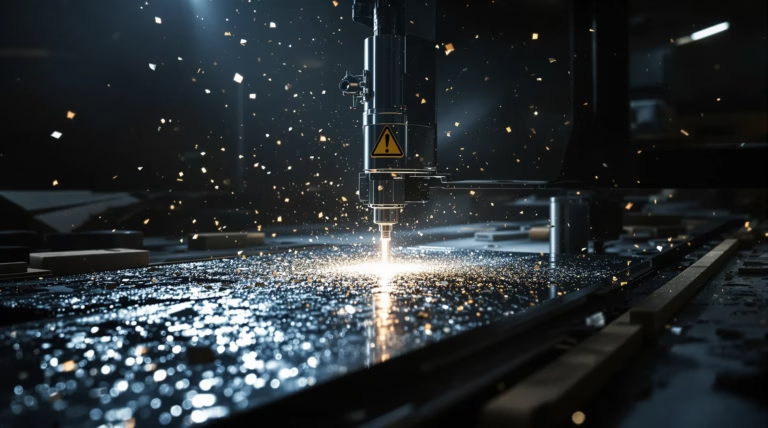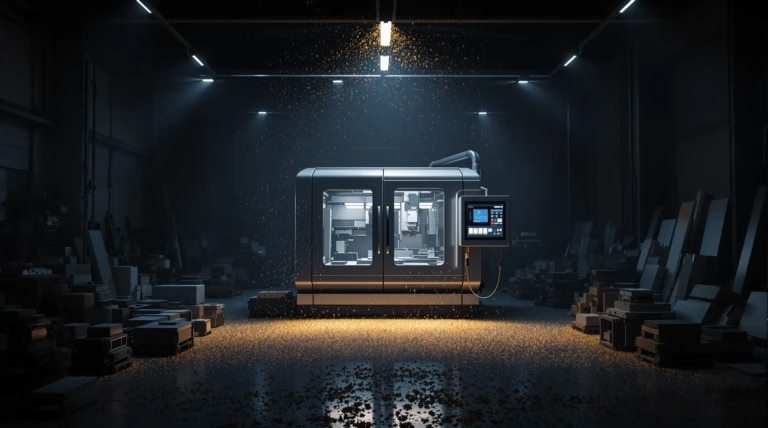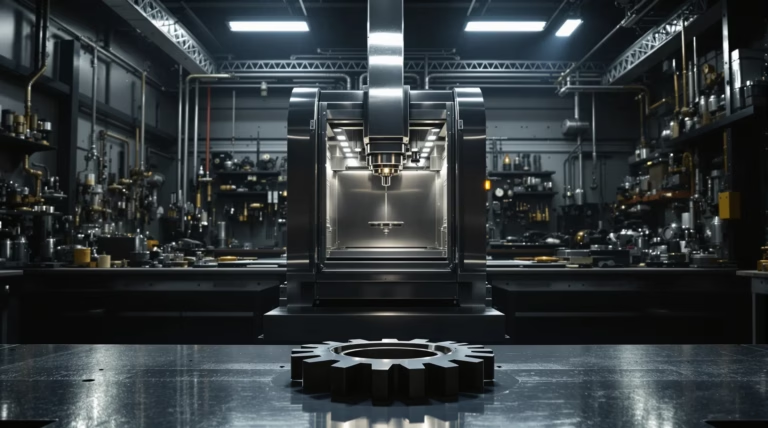Machine Learning in Manufacturing: Transforming the Industry
The manufacturing industry is experiencing a revolutionary transformation through machine learning technologies. From optimizing production processes to predicting equipment failures, ML is setting new standards for efficiency and innovation. Let’s explore how this technology is reshaping manufacturing operations and delivering measurable results across various applications.
The Role of Machine Learning in Manufacturing
Machine learning (ML), a subset of artificial intelligence, is revolutionizing the manufacturing industry by transforming labor-intensive and data-driven processes. As one of the primary drivers of digital transformation in manufacturing, ML analyzes vast volumes of data to identify patterns and insights that would be impossible for humans to detect manually or in reasonable timeframes.
Across production facilities worldwide, ML-based solutions are being integrated throughout the entire production cycle – from initial design to final delivery. By combining machine learning with Industrial Internet of Things (IIoT) devices such as sensors and smart equipment, manufacturers gain unprecedented visibility into their operations, identifying bottlenecks, quality issues, and inefficiencies in real-time. Companies like Fanuc and Preferred Networks have demonstrated this by implementing ML in robotic arms to detect minuscule defects during assembly processes, significantly reducing waste and enhancing product quality.
Understanding Machine Learning and Its Applications
Machine learning in manufacturing involves algorithms that learn from operational data to make predictions and recommendations without explicit programming for each scenario. These systems continuously improve over time as they process more information, making them increasingly valuable assets.
- Predictive maintenance for equipment failure prevention
- Real-time quality control through computer vision
- Supply chain optimization and demand forecasting
- Energy consumption optimization
- Enhanced robotics and automation
- Mass customization capabilities
- Improved human-robot collaboration
- Cybersecurity through anomaly detection
Benefits of Machine Learning in Manufacturing
| Benefit Area | Impact |
|---|---|
| Production Efficiency | 20-50% decrease in production time |
| Quality Control | Real-time defect detection with superhuman accuracy |
| Workforce Productivity | Significant enhancement through ML-powered tools |
| Security | Enhanced intellectual property and operational technology protection |
| Financial Impact | Reduced operational costs and improved resource utilization |
Enhancing Predictive Maintenance with Machine Learning
Predictive maintenance powered by machine learning represents a paradigm shift from reactive or scheduled maintenance approaches in manufacturing. By leveraging historical performance data and real-time monitoring, ML algorithms can detect subtle patterns and anomalies that precede equipment failures – often weeks or months before they would become apparent through traditional methods.
How Predictive Maintenance Works
The predictive maintenance process begins with data collection from multiple sources across the production environment. These include equipment sensors monitoring vibration, temperature, pressure, sound, and electrical current, alongside historical maintenance records and operational data.
- Data collection from multiple sensor types
- Establishment of baseline performance parameters
- Continuous monitoring of data streams
- Automated alert generation
- Root cause identification
- Automated parts ordering workflows
- Continuous system improvement through reinforcement learning
Case Studies of Predictive Maintenance
| Company | Implementation Results |
|---|---|
| Johnson & Johnson | 50% reduction in unplanned downtime, 400% ROI within 18 months |
| Siemens | 99.5% accuracy in predicting failures up to 6 months in advance |
| BMW | 25% reduction in robot downtime through acoustic analysis |
Smart Factories: The Future of Manufacturing
Smart factories represent the pinnacle of industrial evolution, combining machine learning, artificial intelligence, and IoT to create fully automated, self-optimizing production environments. These advanced facilities utilize interconnected systems that continuously collect, analyze, and act upon real-time data, delivering unprecedented levels of efficiency and productivity. Unlike traditional manufacturing plants, smart factories operate with minimal human intervention, automatically adjusting production parameters to optimize output quality while reducing resource consumption.
| Smart Factory Impact | Performance Metrics |
|---|---|
| Productivity Increase | 30% average improvement |
| Manufacturing Costs | 25% reduction |
| Quality Improvement | Up to 40% enhancement |
| Production Quality Rate | 99.9988% (Siemens Amberg Plant) |
Components of a Smart Factory
- Extensive sensor networks embedded throughout machines and infrastructure
- Connected machines functioning as intelligent communication nodes
- Cloud-based computing platforms for data processing
- Edge computing capabilities for real-time processing
- Digital twin technology for virtual simulation
- Advanced robotics and autonomous guided vehicles
- Integrated manufacturing execution systems (MES)
Machine Learning’s Role in Smart Factories
Machine learning acts as the cognitive engine of smart factories, transforming raw data into actionable intelligence for autonomous decision-making. ML algorithms analyze massive data streams from factory sensors, identifying complex patterns and relationships beyond human capability.
- Predictive maintenance with precise failure forecasting
- Dynamic production scheduling optimization
- Advanced quality control with microscopic defect detection
- Self-optimizing production systems
- Continuous process improvement without human intervention
Improving Quality Control with Machine Learning
ML-powered quality control systems are revolutionizing manufacturing inspection processes, achieving up to 60% higher defect detection rates compared to human inspection. These systems combine computer vision technologies with sophisticated algorithms to monitor production lines continuously, ensuring comprehensive quality assessment without compromising production speed.
Techniques for Quality Control
- High-resolution camera systems with real-time GPU processing
- Convolutional neural networks for visual defect detection
- Ultrasonic testing for internal structural analysis
- Thermal imaging with pattern recognition
- Acoustic analysis for sound-based defect detection
- Multi-modal inspection approaches
Real-World Examples of Quality Control
Intel’s implementation of machine learning in microchip production showcases AI’s transformative impact on quality control. Their system employs high-resolution photography of silicon wafers during manufacturing, while ML algorithms analyze these images for microscopic defects including scratches, bubbles, and pattern inconsistencies. The system automatically halts production when anomalies are detected, enabling engineers to address issues before additional defective chips are produced, leading to substantial cost savings and quality improvements.
BMW’s ML-powered quality control system demonstrates advanced inspection capabilities in the automotive sector. Using computer vision technology, it detects:
- Paint defects as small as 0.2mm
- Panel alignment issues
- Surface imperfections
- Quality inconsistencies with 99.8% accuracy
- Manufacturing variations beyond human detection capabilities
Optimizing Supply Chains with Machine Learning
The integration of machine learning into supply chain management marks a revolutionary advancement in manufacturing industries. Through advanced algorithms and Industrial Internet of Things (IIoT) technologies, manufacturers now operate intelligent supply chains that process vast datasets for autonomous decision-making. These systems simultaneously analyze inventory levels, shipping logistics, consumer behavior patterns, market fluctuations, and weather forecasts to achieve unprecedented operational efficiency.
| Performance Metric | Improvement |
|---|---|
| Logistics Costs | 15-25% reduction |
| Inventory Levels | 20-50% decrease |
| Forecast Accuracy | 25-40% improvement |
Challenges in Supply Chain Management
- Limited visibility – 79% of manufacturing companies lack complete supply network transparency
- Financial impact – $300 billion annual loss in revenue and excess carrying costs
- Demand volatility causing forecasting difficulties
- Supply chain disruptions from natural disasters, geopolitical tensions, and transportation issues
- Inventory management challenges balancing stock levels and capital efficiency
Machine Learning Solutions for Supply Chains
Machine learning provides comprehensive solutions for supply chain transformation through multiple integrated applications. Advanced demand forecasting systems utilize deep learning algorithms to analyze historical sales data alongside external factors, reducing forecast errors by 30-50% compared to traditional methods.
- Route optimization reducing fuel consumption by 15-30%
- Computer vision systems for automated inventory monitoring
- Real-time risk management through continuous supplier performance tracking
- Overall cost reduction of 10-15% for companies like P&G and Amazon
- Improved customer satisfaction through reliable delivery performance
The Integration of Robotics and Machine Learning
The fusion of robotics and machine learning is revolutionizing manufacturing operations. Modern ML-enabled robots adapt to changing production environments in real-time, distinguishing between objects and people, navigating obstacles intelligently, and making autonomous decisions. This advancement has led to productivity increases of up to 25% and quality defect reductions of 30% in facilities implementing ML-enhanced robotics. Companies like ABB and FANUC are pioneering this revolution with collaborative robots that learn complex tasks through demonstration rather than traditional programming.
Advancements in Robotics
Recent advancements in manufacturing robotics have expanded their capabilities through sophisticated computer vision technology, enabling precise component identification regardless of orientation. This enhanced visual intelligence allows robots to perform intricate assembly tasks previously deemed too complex for automation. Advanced force-sensing technologies enable robots to apply exact pressure during assembly, ensuring perfect component fitting without damage.
- Computer vision for accurate component recognition
- Precise force-sensing for delicate assembly operations
- Collaborative robots (cobots) working alongside humans
- Advanced safety sensors with ML algorithms
- Autonomous Guided Vehicles (AGVs) replacing fixed conveyors
Collaborative robots, or cobots, represent a significant evolution in manufacturing automation. These machines work directly with human operators, combining human problem-solving abilities with robotic precision. Unlike traditional industrial robots, cobots feature sophisticated sensors and ML algorithms that instantly detect and respond to potential human contact. The advancement of mobile robotics, particularly AGVs, has revolutionized material transport by using machine learning to optimize routes and prevent congestion.
Machine Learning’s Impact on Robotics
Machine learning has fundamentally transformed manufacturing robotics by enabling complex task execution without explicit programming. While traditional robots excel at repetitive tasks in controlled environments, ML algorithms allow them to recognize patterns, learn from demonstrations, and continuously improve through experience. This advancement particularly benefits complex assembly operations where component positioning varies between cycles.
| Application Area | ML-Enhanced Capabilities |
|---|---|
| Material Handling | Intelligent object recognition and safe grasping of varied items |
| Quality Inspection | Simultaneous product handling and detailed inspection |
| Hazardous Operations | Autonomous welding, chemical handling, and high-temperature tasks |
| Assembly Operations | 15% reduction in cycle times with improved precision |
BMW’s manufacturing facilities exemplify this evolution, utilizing ML-enhanced robots that seamlessly switch between different car model assemblies without reprogramming. These systems employ reinforcement learning to optimize movement paths, demonstrating the transformation of manufacturing robots from simple automation tools to intelligent systems capable of handling modern production demands.

